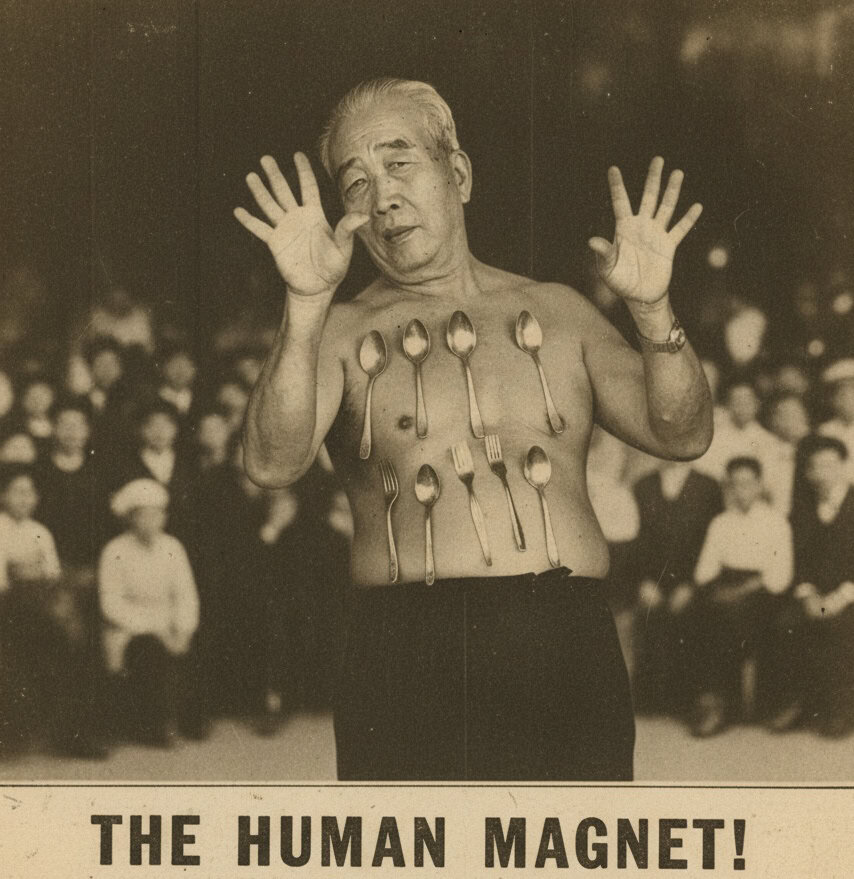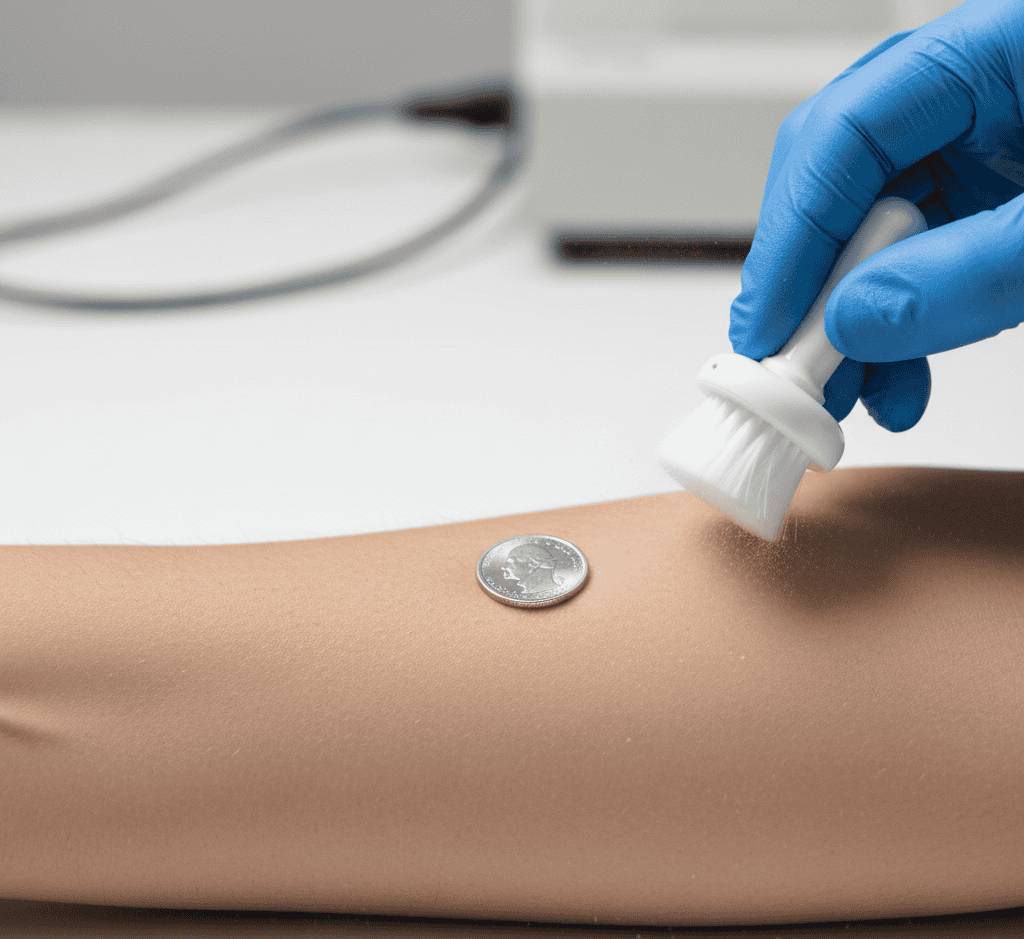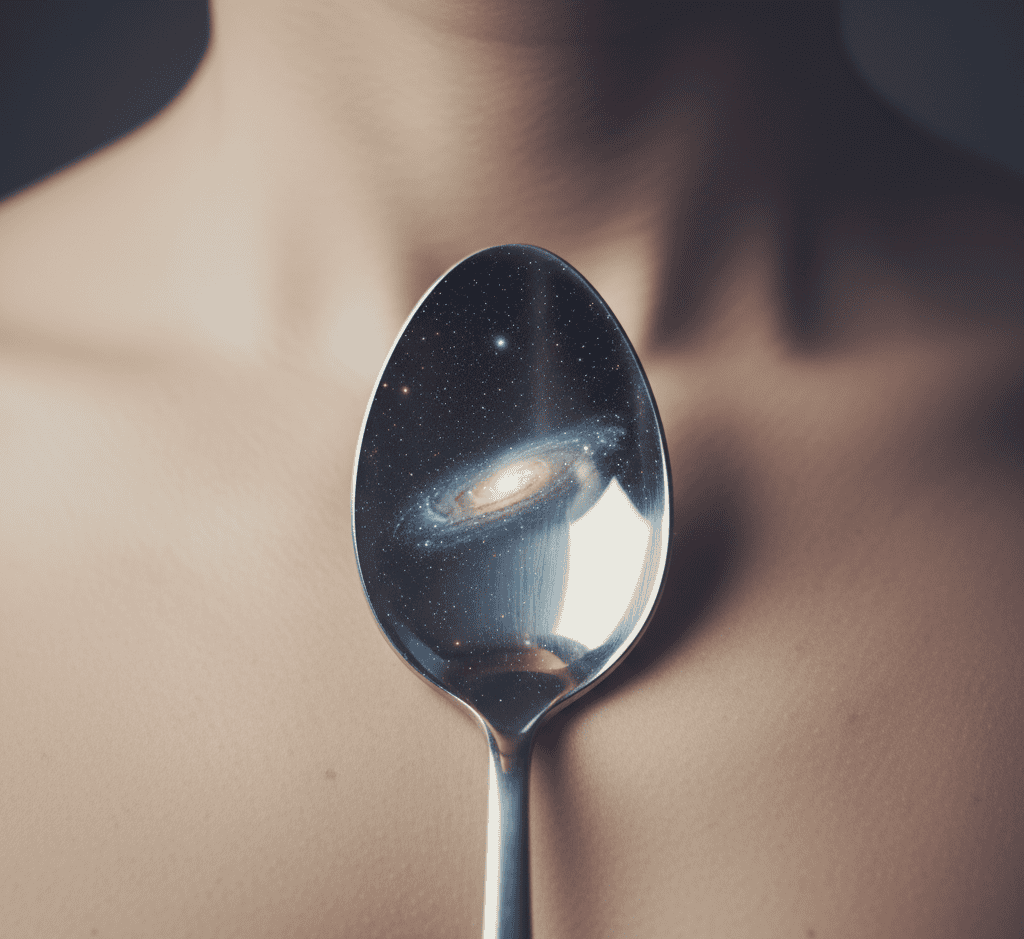There’s something strangely fascinating about the idea that a person could attract metal objects to their body like a living refrigerator door.
Videos of people sticking spoons, coins, or even frying pans to their chest or forehead have spread across television screens and social media feeds for decades.
The internet calls them “human magnets,” and they’ve become one of those curiosities that blend entertainment, mystery, and science all at once.
But are these people truly defying physics, or is there a much simpler explanation hiding behind the spectacle?
As with many things that appear supernatural, the truth is often more down to earth—but no less intriguing once you dig in.
When Spoons Began to Stick
The fascination with human magnets dates back to the 20th century, when newspapers and television programs began showcasing men and women who could make everyday objects cling to their skin.
One of the earliest known figures was a Malaysian man named Liew Thow Lin, nicknamed “The Magnetic Man.”
He became famous for attaching metal spoons, keys, and other household items to his body.
The objects would stay in place even as he moved, and audiences were left wondering if he was a living anomaly.
Liew wasn’t alone. Across the world, others with similar claims began appearing from Russia and Serbia to Japan and the United States.
Their demonstrations often made it onto talk shows and talent competitions, where they amazed crowds and sometimes even baffled scientists.
Some “magnetic people” claimed they could influence compasses or attract nails from a short distance, while others simply enjoyed the fame that came with their strange gift.
However, as the phenomenon spread, scientists noticed something curious: most of the objects sticking to these so-called magnetic people weren’t made of magnetic metals at all.
Stainless steel, brass, copper, and aluminum seemed to cling to skin just as well as iron. That single detail began to unravel the mystery.
If the objects weren’t magnetic, then magnetism couldn’t be the explanation. So what was really going on?
Sticky Skin and Simple Science
In the 1990s and early 2000s, researchers began studying these “magnetic” individuals more closely.
When they ran tests using magnetometers, they found no measurable magnetism coming from the human body.
Instead, what they discovered was something entirely ordinary: skin friction.
Human skin naturally produces oils and sweat, both of which can create a subtle adhesive effect.
When skin is slightly warm, smooth, and dry enough to generate friction, it can hold lightweight, flat objects like spoons or coins.
The effect is similar to sticking a note to a wall using static or a thin film of moisture – it looks impressive but requires no supernatural force.
Scientists performed a clever experiment to prove the point. When they dusted the skin of a “magnetic person” with talcum powder, which absorbs oils and reduces friction, the objects instantly slid off.
Then, when the powder was wiped away, the objects stuck again. It was simple proof that this wasn’t magnetism.
It was physics and chemistry working together in the most basic way. Still, the people who experienced this ability weren’t necessarily lying.
Many genuinely believed their bodies had special powers. The sensation of a cool metal surface pressing against warm skin, especially under bright studio lights or in front of a crowd, could feel like a mysterious “pull.”
Add in a touch of excitement and suggestion, and it’s easy for the brain to interpret that feeling as something magnetic.
Even posture plays a role. Many demonstrations are performed with the person slightly leaning backward, creating the perfect angle for objects to cling to the skin’s surface without falling.
To the eye, it looks like magic. In reality, it’s all about gravity, balance, and friction – three forces that follow the laws of physics, not break them.
The Magnetic Mind
If science has explained the mystery so neatly, why do people still believe in it? The answer may lie not in physics but in psychology.
Humans have always been drawn to the extraordinary. We want to believe that hidden forces are waiting to be discovered.
Psychologists say that phenomena like this thrive on what’s called subjective validation.
That means people interpret their experiences in ways that confirm what they already believe.
If someone is told they might have a magnetic body, they’ll start noticing every object that happens to stick and overlook every one that doesn’t.
There’s also a strong performative element to the human magnet act. When you stand on a stage or in front of a camera and everyone watches you, adrenaline kicks in.
Your body gets warmer, your skin becomes slightly stickier, and your confidence makes you move more deliberately. In that moment, belief and biology merge perfectly.
Even those who watch these performances aren’t immune. The brain loves mysteries.
It releases dopamine when confronted with something puzzling or surprising. That’s why magic tricks, paranormal stories, and “impossible” human abilities never go out of style.
They make us feel the thrill of curiosity, even when logic is whispering the explanation in the background.
This same curiosity has fueled similar myths over the years: spoon-bending by psychic energy, firewalking without burns, and people claiming to harness electricity through their hands.
Each case eventually meets a rational explanation, but the excitement of the unknown keeps us coming back for more.
The Real Attraction
Maybe the truth is that human magnetism has never been about metal or physics. It’s about the pull of curiosity.
The people who call themselves human magnets may not be defying the laws of nature, but they’re tapping into something universal: our need to feel amazed.
Every time we watch a spoon cling to someone’s chest, a small part of us hopes there’s still some mystery left in the world that science can’t fully explain.
And that hope is what truly sticks. Not metal to skin, but imagination to mystery.
It’s the same force that keeps us looking at the stars, chasing legends, and pushing against the edges of what we know.
Whether we call it curiosity, wonder, or simple fascination, it’s the kind of magnetism no one can measure, but everyone can feel.

Ho sempre sentito una forte connessione con il Divino fin dalla mia nascita. Come autrice e mentore, la mia missione è aiutare gli altri a trovare l'amore, la felicità e la forza interiore nei momenti più bui.





